In today’s rapidly changing cryptocurrency mining scene, it is essential for miners to identify the most profitable ASICs (Application-Specific Integrated Circuits) to maximize their profits.
Cryptocurrency mining may not be as prevalent as it once was, but it remains vital to the industry and continues to generate significant profits for miners. Consequently, identifying the most lucrative ASICs is of great importance.
In the year 2024, the crypto mining scene is constantly changing as advanced ASIC models with remarkable power and efficiency keep emerging.
In this article, we’ll examine advanced hardware gadgets designed for cryptocurrency mining and discuss top-performing ASICs expected to bring significant returns in the coming year.
Most Profitable ASICs – The Best ASIC Mining Rigs in 2024
To cut a long story short, the best ASICs for mining in 2024 identified by us are the following:
- Bitmain Antminer KS5 Pro;
- iBeLink BM-KS Max;
- Bitmain Antminer KS3;
- Bitmain Antminer K7 (63.5 Th);
- IceRiver KS3;
- MicroBT Whatsminer M63S Hydro.
For further insights, delve deeper into the following sections to gain a thorough knowledge of every ASIC in our top selection.)
1. Bitmain Antminer KS5 Pro
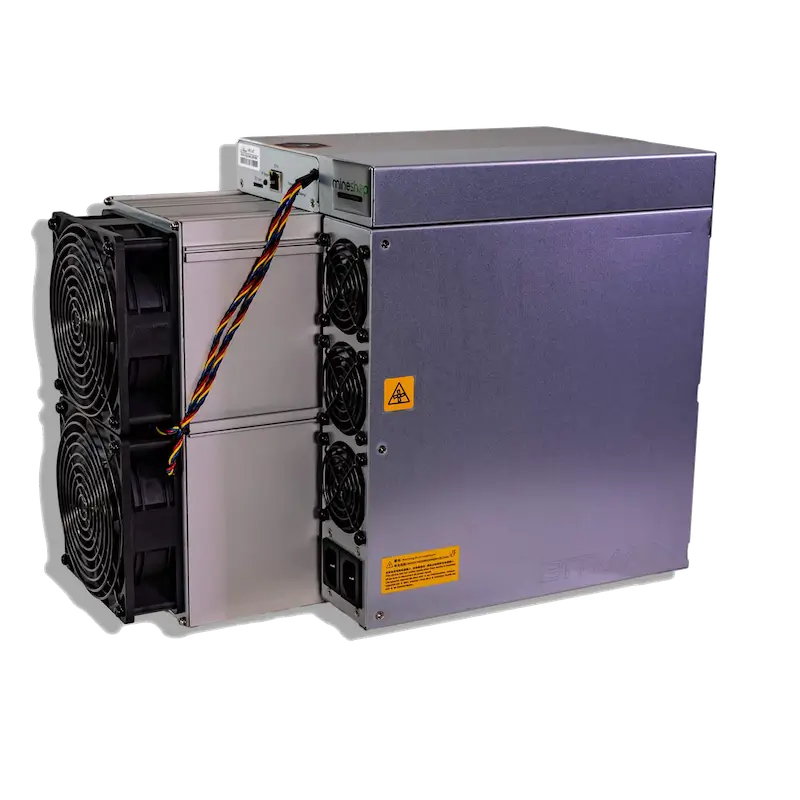
In a nutshell specs of Antminer KS5 Pro:
- Efficiency: 150 J/TH;
- Release Date: March 2024;
- Dimensions (mm): 570x316x430;
- Hashrate: 21 TH/s;
- Algorithm: kHeavyHash;
- Weight: 17,700 g;
- Watts: 3,150 W;
- Manufacturer: Bitmain;
- Price: €32.499, VAT excl.
Introduced in March 2024, the Bitmain Antminer KS5 Pro is a leading ASIC miner for cryptocurrency mining based on the kHeavyHash algorithm. Suitable for expert miners who value both powerful performance and energy savings, it has quickly made an impact despite being new to the market.
With a hashrate of 21 terahashes per second (Th/s), the KS5 Pro offers impressive processing power for tackling demanding mining tasks. At the same time, it keeps energy consumption moderate at 150 joules per terahash (J/Th), making it a more economical choice compared to less efficient miners.
An important factor to keep in mind when looking at the ASIC mining rig KS5 Pro is its large power usage. It consumes 3,150W, which means it needs a heavy-duty industrial power source to operate. This can add to the overall expense for buyers, as they’ll need to account not just for the miner’s price but also the cost of upgrading their electrical infrastructure.
Pros of Bitmain Antminer KS5 Pro
- High hashrate;
- Power efficiency;
- Established brand;
- Scalability.
Cons of Bitmain Antminer KS5 Pro
- Initial investment cost;
- Availability;
- Regular maintenance;
- Power consumption.
2. iBeLink BM-KS Max
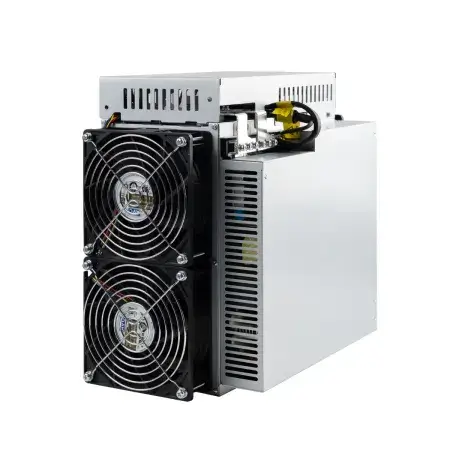
In a nutshell specs of iBeLink BM-KS Max:
- Efficiency: 323.81 J/TH;
- Release Date: February 2024;
- Dimensions (mm): 424x289x388;
- Hashrate: 10.50 TH/s;
- Algorithm: kHeavyHash;
- Weight: 12,200 g;
- Watts: 3,400W;
- Manufacturer: iBeLink;
- Price: $11,160.
Another new miner on the market is the iBeLink BM-KS Max, which was released in February 2024 for those looking for specialized hardware to mine the Kaspa cryptocurrency. This miner is particularly suited for tackling the KHeavyHash algorithm used by Kaspa.
With a hashrate of 10.5 terahashes per second, the BM-KS Max is an effective mining machine for generating Kaspa coins.
This miner’s efficiency rating of 323.81 J/Th may not be the most energy-efficient option available, but it strikes a good balance between delivering strong performance and managing power usage when compared to certain other alternatives.
A mining setup with four fast-working fans in its air cooling system effectively disperses heat while the system is running, ensuring peak performance and possibly prolonging the miner’s life.
Although it has a modest efficiency level, this device consumes a considerable amount of power, equating to 3,400 watts. Consequently, it requires a high-voltage power source and may necessitate enhancements to your electrical system to accommodate this substantial energy consumption.
As a new release, the BM-KS Max might also face limited stock or regional availability.
The air cooling system emits a sound level of up to 75dB, which is about as loud as having a lively discussion.
Pros of iBeLink BM-KS Max
- High hashrate;
- Power efficiency;
- Cooling system.
Cons of iBeLink BM-KS Max
- Noise level;
- Power consumption;
- Availability and scalability;
- Regular maintenance.
3. Bitmain Antminer KS3
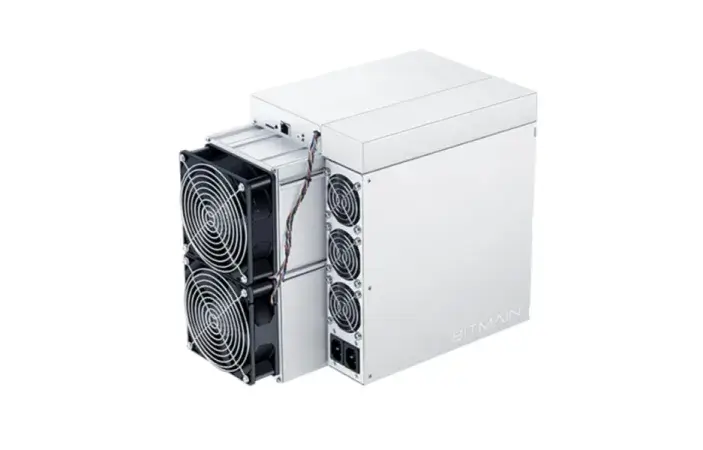
In a nutshell specs of Bitmain Antminer KS3:
- Efficiency: 377.66 J/TH;
- Release Date: August 2023;
- Dimensions (mm): 195x290x430;
- Hashrate: 9.40 TH/s;
- Algorithm: kHeavyHash;
- Weight: 16,100 g;
- Watts: 3,550W;
- Manufacturer: Bitmain;
- Price: $14,000.
An alternative option for top-tier ASIC mining rigs is the Antminer KS3 by Bitmain, introduced in August 2023. This miner excels in cryptocurrency mining utilizing the kHeavyHash algorithm.
At KS3, we have a powerful hashrate of 9.4 Terahashes per second. This means we can handle complex hash functions like kHeavyHash efficiently. As a result, we may be able to mine more coins due to increased earnings potential.
An ASIC miner setup like this one boasts a more streamlined design than certain powerful alternatives, making it an ideal choice for miners working in cramped quarters.
With two fans, the KS3 model is capable of ensuring sufficient air circulation for effective cooling while in use, which could ultimately lead to an extended lifespan.
At the KS3 station, we have a power consumption of about 3,500 watts. This means you’ll require a powerful electrical outlet with a higher voltage, and there might be a need for improvements in your current electrical setup to manage such high energy usage.
Additionally, the miner generates noise around 75dB, similar to a loud conversation.
Pros of Bitmain Antminer KS3
- High hashrate;
- Power efficiency;
- Reputable company;
- Compact design;
- Dual fan cooling.
Cons of Bitmain Antminer KS3
- Moderate noise level;
- Regular maintenance;
- Power consumption.
4. Bitmain Antminer K7 (63.5 Th)
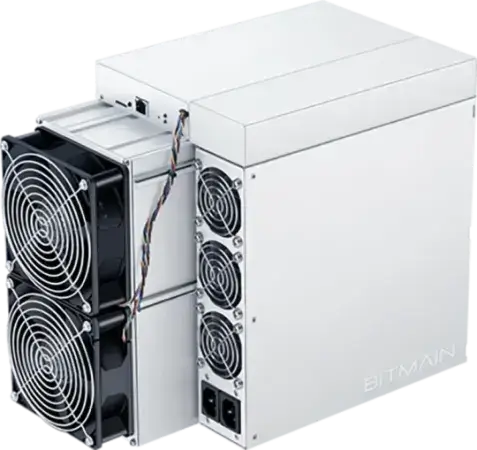
In a nutshell specs of Antminer K7:
- Efficiency: 0.049 J/Gh;
- Release Date: January 2023;
- Dimensions (mm): 195x290x400;
- Hashrate: 63.5 TH/s;
- Algorithm: Eaglesong;
- Weight: 14,000 g;
- Watts: 3,080W;
- Manufacturer: Bitmain;
- Price: $4,500.
In January 2023, Bitmain launched the Antminer K7 (boasting a hash rate of 63.5 TH), which generated significant excitement within the crypto mining community. This ASIC miner from Bitmain is currently the leading model in its class for both 2023 and 2024.
This miner effectively utilizes the Eaglesong algorithm’s power, reaching a maximum hashrate of 63.5 terahashes per second.
This miner, the Antminer K7, not only delivers outstanding results but also uses a maximum power consumption of 3,080 watts. Consequently, it stands as a powerful player in the realm of cryptocurrency mining. However, its design remains identical to that of its predecessor, with no significant changes reported.
The manufacturer boasts that the Antminer K7 is a new and powerful version of a CKB Nervos miner, alleging it to be the most effective one in the market.
The Bitmain K7 consumes an impressive amount of energy at 3,080 watts. Despite this high power usage, it boasts an efficiency rating of just 0.049 joules per gigahash. This power-hungry design leads to increased productivity, allowing miners to solve block puzzles more rapidly.
The Bitmain K7 is capable of keeping cool with two fans, ensuring efficient temperature management. But keep in mind that this miner reaches a maximum noise level of 75dB during operation. While effective at cryptocurrency mining, it’s important to note that the K7 can be quite noisy compared to other devices.
Pros of Bitmain Antminer K7 (63.5 Th)
- High hashrate;
- Energy efficiency;
- Cooling system.
Cons of Bitmain Antminer K7 (63.5 Th)
- Noise level;
- Limited modifications;
- Regular maintenance;
- Single-coin focus – You can mine only Nervos (CBK).
5. IceRiver KS3
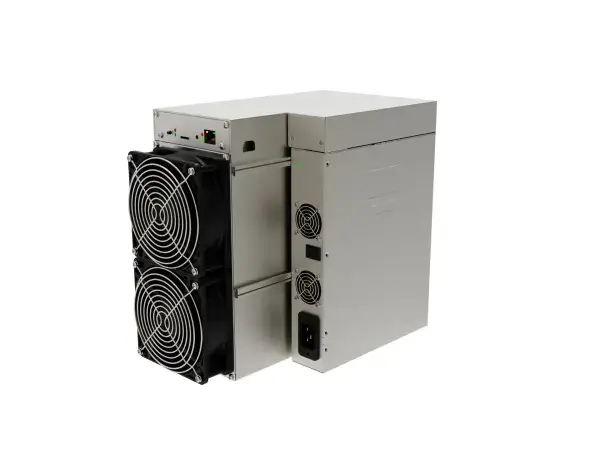
In a nutshell specs of IceRiver KS3:
- Efficiency: 400 J/TH;
- Release Date: September 2023;
- Dimensions (mm): 370x195x290;
- Hashrate: 8 TH/s;
- Algorithm: kHeavyHash;
- Weight: 14,400 g;
- Watts: 3,200W;
- Manufacturer: IceRiver;
- Price: $12,199.
The IceRiver KS3 is a specialized ASIC miner manufactured by IceRiver, specifically engineered to mine using the kHeavyHash algorithm. It’s the sole ASIC miner we discussed in this list provided by IceRiver.
At a hashrate of 8 terahashes per second (TH/s), the KS3 is well-equipped for mining heavy hash cryptocurrencies, providing efficient processing power that could result in increased coin rewards.
With an efficiency rating of 400 Joules per Terahash, this option could offer a good balance between performance and energy usage, positioning it in the middle ground among heavy hash rate miners.
At the KS3 stage, there’s a noteworthy power consumption of around 3,200 watts. This implies the need for a high-voltage power source, and possibly improvements to your electrical system to manage this level of demand. Don’t forget to consider electricity expenses when assessing profitability.
Furthermore, the absence of stated noise level benchmarks notwithstanding, other miners of comparable power usage tend to produce noise in the range of 70-75 decibels, akin to a lively discussion.
Pros of IceRiver KS3
- High hashrate;
- Power efficiency;
- Compact design.
Cons of IceRiver KS3
- High initial investment;
- Moderate noice Level;
- Regular maintenance;
- Power consumption.
6. MicroBT Whatsminer M63S Hydro
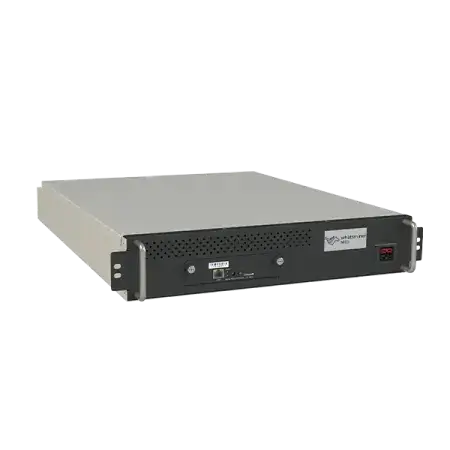
In a nutshell specs of MicroBT Whatsminer M63S Hydro:
- Efficiency: 18.59 J/TH;
- Release Date: October 2023;
- Dimensions (mm): 483x663x86;
- Hashrate: 390 TH/s;
- Algorithm: SHA-256;
- Weight: 27,500 g;
- Watts: 7,250W;
- Manufacturer: MicroBT;
- Price: $11.300.
Up until now, no ASIC (Application-Specific Integrated Circuit) that uses the SHA-256 algorithm for mining Bitcoin, Bitcoin Cash, or other popular cryptocurrencies has made it to the top of the rankings. Enter the MicroBT Whatsminer M63S Hydro – a new addition that’s worth checking out.
The MicroBT Whatsminer M63S Hydro is a specialized Bitcoin miner with top-notch performance using SHA-256 algorithm. Its unique selling points are its powerful processing abilities and advanced water cooling system, setting it apart from other miners in the market.
A water-cooling system offers significant benefits over conventional air cooling for miner setups. Specifically, it enhances heat removal capabilities, which can result in increased efficiency and reduced expenses in the future.
Yet, it’s essential to keep in mind certain factors before investing in the M63S Hydro. Notably, water-cooled mining rigs entail more upkeep than their air-cooled counterparts. Be ready for recurring chores such as replenishing the coolant and assessing the system’s condition on a regular basis.
Pros of MicroBT Whatsminer M63S Hydro
- High hashrate;
- Power efficiency.
Cons of MicroBT Whatsminer M63S Hydro
- Noise level;
- High-maintenance system;
- Power consumption.
What Is an ASIC?
An Application-Specific Integrated Circuit (ASIC) is a type of advanced hardware in the crypto world, pioneered by Bitmain Technologies. Unlike general-purpose processors like CPUs and GPUs, ASICs are customized for cryptocurrency mining, delivering faster performance and reduced energy usage.
In simple terms, ASICs are usually designed by companies for mining specific cryptocurrencies through unique algorithms.
Effective use of ASIC miners leads to substantial profits due to their superior speed and productivity, despite the significant investment required for construction. ASICs outpace GPUs and CPUs in terms of processing power, making them a go-to option for large mining operations. Newest ASIC models can handle a Terahash (trillion complex calculations) while consuming at least 29.5 joules of energy.
Bitmain’s Antminer is a well-known ASIC series in the industry, renowned for its high productivity. On average, these devices use over 3,250W of power and are capable of delivering an impressive hash rate of 110 quadrillion hashes per second. Nevertheless, potential buyers should be aware that their price tag surpasses $2,000, which might seem expensive for newcomers to the field.
Many people associate Bitmain Antminer with ASICs due to their prominent role in the industry. However, it’s important to keep in mind that there are other significant players in the market who also play a vital role in the production of ASICs and contribute to the ecosystem as a whole.
What Is ASIC Mining and How Does It Work?
Now we know what an ASIC is, but what is ASIC mining?
Crypto mining with ASICs involves utilizing specialized machinery (ASIC miners) to perform the required calculations for mining cryptocurrencies. These machines work through intricate mathematical problems to create new blocks and add validated transactions to the blockchain. Rewards in the form of crypto are granted to miners who successfully validate transactions using their ASIC miners.
In simpler terms, the Proof-of-Work (PoW) system verifies and validates transactions by requiring computers to solve complex mathematical problems first. Once a problem is solved, the transaction is added to the blockchain. Miners, who contribute their computational power towards solving these problems, have a chance to add the new block to the chain and earn rewards.
Is ASIC Mining Profitable?
If your curiosity lies with ASICs, it’s likely that you’d be intrigued to know if they can bring about a profit.
In simpler terms, the ability to make a profit from ASIC mining for different cryptocurrencies can change frequently based on market situations.
In a thriving crypto market, ASICs can generate substantial returns, taking anywhere from a few months to a year to recoup the initial investment. Conversely, during downturns in the market, the profitability of ASIC mining can plummet, causing extended payback periods that may last for several years.
In other words, keeping up-to-date with current market trends is essential for maximizing profits from ASIC mining and investing time and resources into the most profitable digital coins.
Additionally, remember to regularly evaluate which cryptocurrencies are most profitable to mine.
FAQs
How to Set Up an ASIC Miner?
Here are the simple steps to set up your own ASIC miner:
- Evaluate the feasibility and costs – Determine if building an ASIC miner is cost-effective by considering expenses like hardware, electricity, and mining software and calculating potential profitability;
- Acquire the necessary components – Purchase essential components like hashboards, heatsinks, cooling fans, RAM, printed circuit boards, power supply unit (PSU), and the rig frame;
- Assemble the ASIC miner – Build the miner by assembling the rig frame, attaching the fans, positioning the PCB and hashboards, and connecting the PSU;
- Install mining software – Choose the appropriate mining software for the specific cryptocurrency you want to mine and install it on your ASIC miner;
- Set up a wallet and join a mining pool – Create a wallet for the cryptocurrency you’re mining and find a reliable mining pool to join. This allows you to combine your mining power with others for more consistent earnings;
- Start mining – Connect your ASIC miner to the blockchain network, power it up, and begin mining the cryptocurrency of your choice.
How Much Does an ASIC Miner Make?
An ASIC miner’s income is influenced by several elements. The miner’s hashrate, or computational ability, is one factor. Another is the miner’s efficiency in converting electricity into computational power. Electricity cost is another significant factor. Additionally, current market trends for cryptocurrencies and the mining complexity of the particular cryptocurrency being mined play crucial roles.
Additionally, the earnings from ASIC mining can change due to price and complexity shifts in the market. For a better understanding of potential profits based on specific ASIC hardware, consider utilizing an online calculator.
What Is the Most Profitable ASIC Miner?
According to our findings, the Bitmain Antminer KS5 Pro offers the highest profitability among ASIC miners at present. The iBeLink BM-KS Max comes in second. Following them are the Bitmain Antminer KS3, Bitmain Antminer K7 (63.5 TH), IceRiver KS3, and MicroBT Whatsminer M63S Hydro, in that order, based on profitability.
In Conclusion
For crypto supporters around the globe, ASIC mining represents the advanced technology of tomorrow. Unlike CPUs and GPUs, ASICs provide superior efficiency and require minimal power consumption.
To find the most lucrative ASIC miner for a specific cryptocurrency, users need to take into account certain key factors. Firstly, they should identify the particular cryptocurrency they intend to mine. Secondly, they must determine the appropriate hardware type required for mining that specific cryptocurrency. In simple terms, the choice of an ASIC miner depends on both the targeted cryptocurrency and the necessary mining equipment.
Some costlier models may yield greater earnings in certain situations, while in other instances, purchasing a larger quantity of less expensive models could result in comparable profits.
Read More
- Gold Rate Forecast
- PI PREDICTION. PI cryptocurrency
- SteelSeries reveals new Arctis Nova 3 Wireless headset series for Xbox, PlayStation, Nintendo Switch, and PC
- Masters Toronto 2025: Everything You Need to Know
- WCT PREDICTION. WCT cryptocurrency
- Guide: 18 PS5, PS4 Games You Should Buy in PS Store’s Extended Play Sale
- LPT PREDICTION. LPT cryptocurrency
- Elden Ring Nightreign Recluse guide and abilities explained
- Solo Leveling Arise Tawata Kanae Guide
- Despite Bitcoin’s $64K surprise, some major concerns persist
2024-04-12 15:47